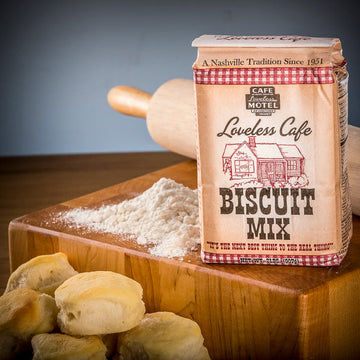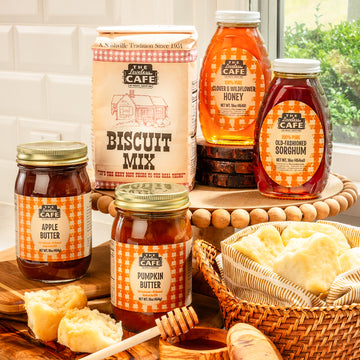If you can never get your pancakes to turn out just right, a cast iron skillet could be the solution to your struggles. Cast iron skillets are a favorable cooking tool because they create even heat distribution. Here are amazing tips and tricks for cooking pancakes on a cast iron skillet for the perfect results every time.
1. Ensure the Skillet is Well Seasoned
Seasoning refers to the layer of polymerized oil baked onto the surface of the skillet, A well-seasoned skillet is crucial for cooking pancakes because it establishes the skillet’s non-stick and rust-resistant properties.
To season your skillet, start by washing it with hot, soapy water. Dry it thoroughly, as moisture is the enemy of cast iron.
Apply a thin layer of vegetable oil to the entire skillet, including the handle and bottom. Place it upside down in a preheated oven at 450 degrees Fahrenheit for an hour. Allow it to cool completely before using it.
2. Heat the Skillet on Medium Heat at 375 Degrees Fahrenheit
Too high a heat, and the pancakes will burn on the outside while remaining raw inside. Too low, and they will be pale and unappetizing. Medium heat, around 375 degrees Fahrenheit, is ideal for achieving that golden-brown perfection.
3. Preheat the Skillet for Five Minutes
Preheating the skillet is a step you don’t want to skip because it's the best way to evenly cook pancakes with a golden crust. Turn on the stove to medium heat and allow the skillet to heat up for about five minutes.
To test the skillet's temperature, sprinkle a few drops of water on it. If the water sizzles and evaporates immediately, the surface is ready to cook pancakes on.

4. Use a Thick Pancake Batter
It doesn’t matter if you’re cooking homemade pancakes from a family recipe or using a southern pancake mix. The key to delicious pancakes cooked to perfection is to use a recipe that makes fluffy pancakes.
A thick pancake batter will cook evenly and form a delightful, slightly crisp outer layer while staying fluffy inside.
Thick batter also means the pancakes will hold up better to flipping. Thin batter tends to create flimsy pancakes that can break or fold when you try to turn them over, whereas thicker batters result in sturdier pancakes that flip smoothly.
Moreover, thick pancake batter is less prone to burning. Cast iron skillets could cook the edges of a thin batter too quickly, potentially causing the outside to burn before the inner part is fully cooked. Using a thicker batter ensures a slower and more controlled cooking process, reducing the risk of burning and resulting in pancakes that are thoroughly cooked with a consistent texture.
5. Let the Pancake Batter Rest for Five Minutes
Allowing your pancake batter to sit for about five minutes at room temperature can improve the texture and flavor of your pancakes. This resting period allows the flour to fully hydrate and the gluten to relax, leading to lighter, fluffier pancakes.
It also gives the baking powder time to activate, creating air pockets that will make your pancakes rise beautifully. This activation process happens when the baking powder reacts with the liquid ingredients, releasing carbon dioxide gas. These gas bubbles get trapped in the batter, causing it to expand and become fluffy as it cooks.
6. Grease the Pan With a Little Butter or Oil
Using oil or butter helps create a smooth surface for your pancakes to cook on and can contribute to a deliciously crispy edge. To grease the pan, first choose your fat, such as vegetable oil or melted butter. Butter can add a rich, savory flavor to your pancakes, while oils typically result in a cleaner finish and are less prone to burning at high temperatures.
Just remember to use a small amount because too much fat causes pancakes to cook unevenly and become greasy. The goal is to form a light coating that doesn't pool on the surface.
Given the amazing heat retention of cast iron, the fat will remain at an optimal temperature. As you cook multiple batches, you may need to reapply a small amount of fat in between each one to maintain the non-stick surface. This ensures that every pancake turns out perfectly golden and easy to flip.

7. Don’t Let the Pancakes Touch the Edge of the Skillet
When you’re pouring pancakes, sometimes you add too much batter and they spread out a little too far than you want. The goal is uniform cooking. Pancakes that cook halfway on the flat surface and on the edge is a recipe for disaster. They’re difficult to flip, won’t crisp up evenly, and will stand out like a sore thumb on the plate.
Pour the batter directly onto the flat, central area of the skillet. Use a ladle or a measuring cup to control the amount of batter you add. Be careful when adding to ensure that each pancake has enough space around it to cook evenly.
This is when the batter's thick consistency comes in handy. You'll have more control over the shape and size of each pancake. It will prevent you from accidentally pouring the batter onto the cast iron skillet's edge.
8. Only Flip the Pancakes Once
Flipping pancakes multiple times interrupts the cooking process. Each time you slide the spatula beneath the pancake, it loses some of the heat built up inside. This affects the pancake's ability to rise, which makes them dense and less fluffy.
When cooking on a cast iron skillet, the importance of flipping only once becomes even more pronounced. If you flip the pancakes multiple times, the constant exposure to the skillet's high heat can cause them to develop a tougher crust and become overcooked on the outside while undercooked inside.
To achieve the best results, wait until you see bubbles form on the surface of the batter and the edges start to look set. This indicates that the bottom side is fully cooked and ready to be flipped. Using a spatula, gently lift the pancake and flip it with a quick motion to avoid splattering batter. After flipping, allow the other side to cook for about one to two minutes.
Everyone can achieve incredible results by using these tips and tricks for cooking pancakes on a cast iron skillet. With careful preparation of the cast iron skillet to the pancake batter’s consistency, you’ll cook deliciously fluffy pancakes every time.


